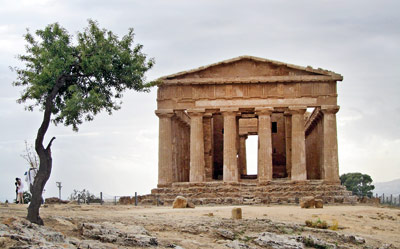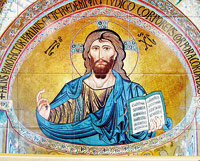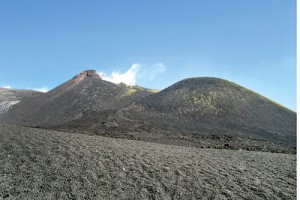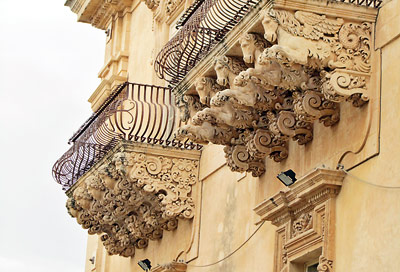The Island of Persephone reveals her many wonders

Greek temple in Sicily
Before we visited Sicily, I must confess that we knew little about the place – except for having read Mary Taylor Simeti’s evocative book On Persephone’s Island: A Sicilian Narrative about a year in her life on the island as the foreign-born wife of a Sicilian professor in Palermo.
If one looks at a map of the Mediterranean Sea, the island resembles a football at the toe of Italy. In movies like The Godfather it was the birthplace of the feared Mafia – and in Greek and Roman mythology, it was the island beloved of Ceres/Demeter, the goddess of harvests, from where Pluto the god of the underworld abducted her daughter Persephone.
But when we visited, we discovered Sicily to be an absolutely fascinating place – part of Italy and yet a land unto itself, distinctly different.
Like Sri Lanka, Sicily was subject over the centuries to wave upon wave of traders and conquerors – Phoenicians, Greeks, Carthaginians, Romans, Tunisians, Normans and Spaniards – and just as the Indians, Arabs, Portuguese, Dutch and British have done here, they have all left their mark on the island and its people.
From about 800 BCE, Sicily was colonised by the Greeks, who established powerful cities like Syracuse which once rivalled Athens for supremacy. They were replaced by the Romans who in turn were displaced by Muslims from Tunisia.

Christ Pantocrator in the Capella Palatina
Two hundred and fifity years of Islamic rule left the island with a legacy of North African foods and fruits, advanced methods of agriculture and Arabic words – plus very impressive architecture.
In 1061, Norman adventurers overthrew the Muslim rulers and established their own kingdom here, just as in 1066 just five years later another island off the coast of Europe – Britain – would be subjugated by related Norman conquerors.
We began our own visit in Palermo, the regional capital, where the highlight of our tour was the Capella Palatina (Palatine Chapel). Located in the old Norman Palazzo which now houses Sicily’s parliament, the Chapel was the creation of King Roger II.
We queued to reach the entrance to the chapel, entered, looked up – and were stunned by the sheer beauty of the place. Largely the work of Islamic craftsmen, the Capella is gloriously decorated with thousands upon thousands of splendid mosaics that have created a wondrous panorama of artwork.
Prominent among the images is that of Christ Pantocrator whose eyes (like those of the Mona Lisa) seem to follow the viewer wherever in the chapel he or she may be.
It is interesting to see in Sicily’s cathedrals – in places like Palermo, Monreale and Cefalu – how Christian themes are combined with Islamic techniques of artwork.
Palermo’s cathedral still has a pillar with a carved Arabic verse from the Koran – and in Cefalu cathedral I discerned the vestiges of a Roman painting on one of the pillars – obviously recycled from a former Roman temple!

Mount Etna
The island’s Classical heritage is evident in the ruins of Greek theatres such as in Syracuse (where Archimedes lived) and the massive Doric temples in places like the UNESCO World Heritage site of Agrigento – as well as in Roman villas like the Villa Romana del Casale with its elaborate mosaic-decorated floors and Roman amphitheatres. The latter is now in ruins but gladiators and wild beasts would have entertained the masses here nearly 2000 years ago.
Sicily is famous among other features for earthquakes and volcanoes – Mount Etna in the northeast is still active. We were privileged to take a tour – first by cable car to the top and then in tough four-wheeled drive vehicles along the moonscape-like lava surface – to see from up close the mouth of the volcano ominously puffing out smoke!
A visit to Sicily is not complete without sampling her food – fresh fruits like blood red oranges and melons as well as delicacies like marzipan, cannoli (pastries filled with sweet cream cheese) and babbalucci (marinated snails).
A Sicilian lunch is not simply an opportunity to wolf down a sandwich or a quick plate of rice and curry. In Sicily, a proper meal takes a couple of hours, with an antipasto of olives, meats, cheeses, sun-dried tomatoes and other savoury delicacies, which is then followed by a delicious pasta dish preceding the main course.
After the main course come dessert and coffee – all to be taken with a liberal dose of good conversation and good wine!

Decorated balconies


